What to do at school with children when it is very hot.

Increasingly, in recent years, the month of June is hot and keeping children interested and involved, both at home and at school becomes a challenge.
Being in kindergarten with high temperatures.
The summer heat, combined with the fatigue sustained during the school year, make the month of June often long and tiring for both adults
that for the children who live the experience of kindergarten.
The other school orders suspend classes at the beginning of the month, while the youngest attend their schools until the fateful date of 30 June and
Many of them then continue with frequency to summer camps.
In these years characterized by extreme climatic events, the heat waves more and more anticipated in time often already characterize abundantly the months of May and June.
What you do not imagine being outside, is how much effort it takes, especially for the little ones, to be at school in the heat, in buildings often not cooled and with courtyards without shady areas.
As you can easily imagine, the discomfort is so much and manages to be mitigated only with the proposal of activities that manage to be together, interesting and refreshing.
The refreshment is good for the body and equally to the mind: living activities too arranged or prolonged boredom, does not help the well-being
For this reason, even in this period, making new and interesting proposals to children can really help.
If you like, here are the five proposals of our last school week, structured trying to alternate outdoor activities and indoor activities
to avoid repetition and the consequent loss of interest.
Experiment with drops of color and oil at kindergarten.
The following materials are required for this proposal:
- plates or caps of small plastic containers, such as those of spreadable cheeses
- seed oil
- little water colored with tempera, of three different colors
- toothpicks
- soap for the dishes
- dropper
I have used a plate for each child, but the proposal can also be made using larger containers, to share among more children.
The activity begins with the preparation of plates that must be greased with a thin layer of oil.
On this previously prepared base, boys and girls will drop the drops of colored water, using droppers
This action must be done calmly and trying to keep the drops of the different colors separated and spaced.

Once this is done gently, the children will use toothpicks, slightly soaked in dish soap, to touch the drops of color and they will see a small magic: the drops will begin to break and mix, creating amazing effects.

At the end of the experiment, the remaining liquid can be used to paint, using cotton swabs, to discover the effect left by the oil on the sheets of paper.
Travasi Montessori with water, enriched by bags and different materials.
With the heat nothing better than a pleasant activity as the Montessori transfers with water, valuable to refresh the body and ideas.
In order to carry out this type of activity, I believe that the organization of space and materials is important.
Working in a structured way, helps boys and girls not to get lost in confusion and inevitable mess and allows to manipulate
Enjoying the pleasure offered by water but at the same time staying focused on a certain task.
In my experience as a teacher I have found out how significant this aspect is, from the first to the last day of school
Children are involved and active, and the failure to offer valuable tasks diminishes the pleasure of learning and makes the days longer and more tiring.
Montessorian works, but proposed every day with variations on the theme, with integrations of new tools and materials of all kinds, to keep up the desire to experiment and learn.
Starting from the containers: all available containers can be used, from the largest to the smallest ones; the same goes for tools and materials.
In my proposal today, I have chosen to use several small trays, resting on a raised top
which offer the advantage of being able to subdivide different materials in a simple and clear way.
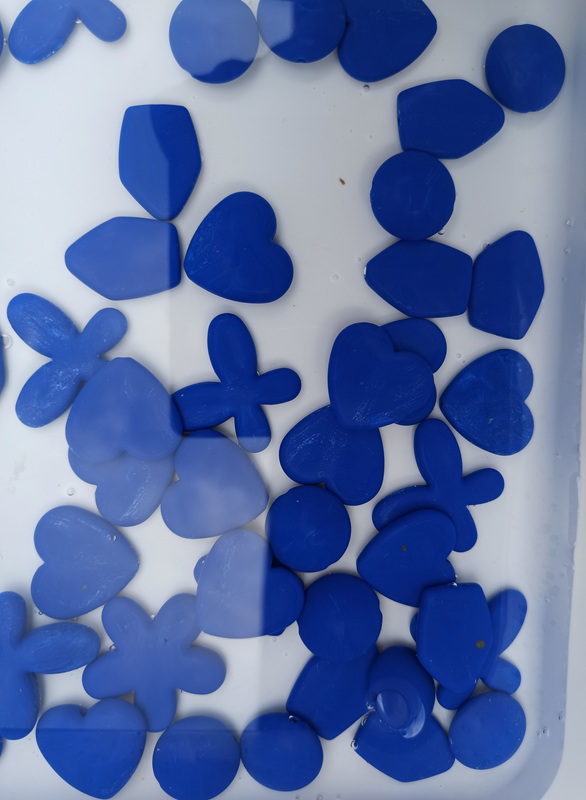
I proposed to the boys and girls to try all the trays, freely rotating and acting with plastic bags to transfer.
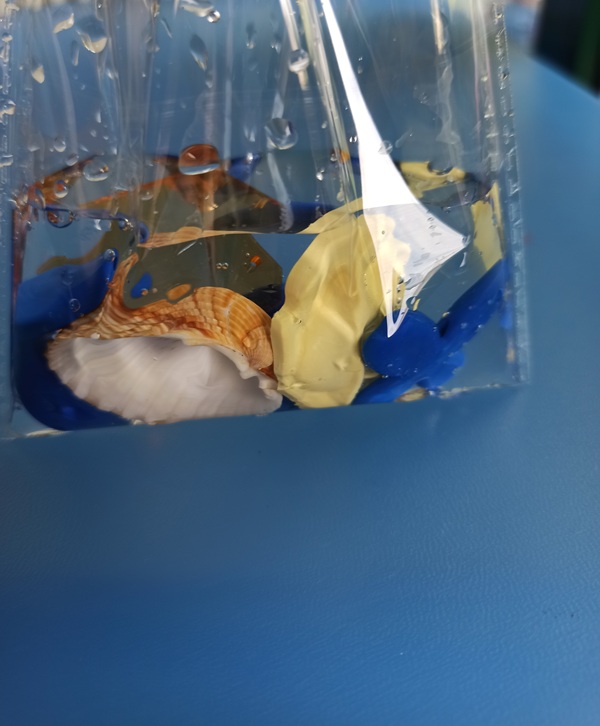
The bags are very popular, because they are challenging and give a thousand different ways to hold, squeeze, rotate over, drain, empty, wring out, burst, break.
They engage the children and relax them in true Montessori style.
Sure at the end of the session the materials in the trays were all mixed and confused, but the boys and girls were all satisfied and happy.
Graphic and manipulative activity, with color and water on paper.
This proposal is pleasantly quiet, offers the opportunity to take your time and do things according to your own pace and interest:
The younger children have lived it in a simple way, while the older ones have launched themselves into colorful and complex graphic productions.
The material required is:
- a roll of absorbent paper, white ones with embossed decorations
- pens
- dropper
- water
As a first step I proposed to the children to use markers to freely color the paper sheet, following the texture in bas-relief:
Each hole had to correspond to a colored dot.
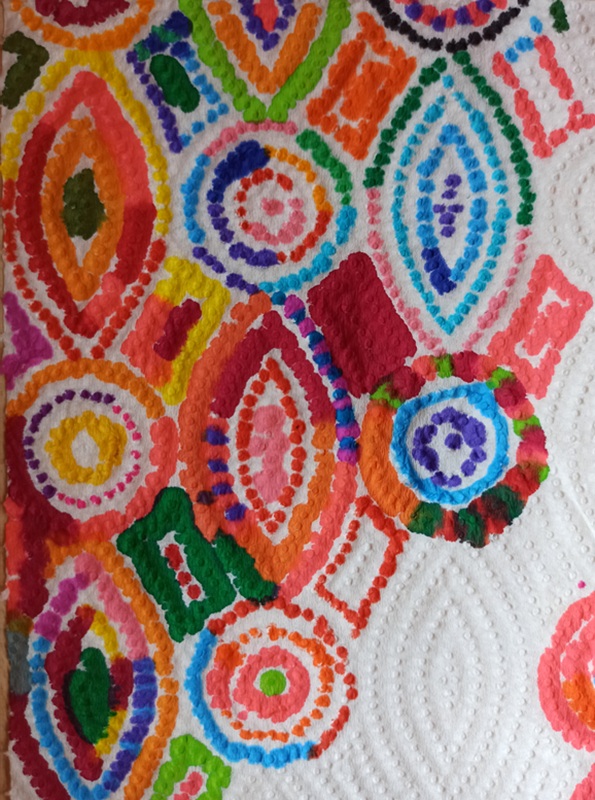
The thing involved and engaged the older ones, for a prolonged time, allowing me, meanwhile, to follow the younger ones with the next step.
Once a suitable color texture is prepared on the sheet of house paper, you proceed by pouring with the dropper, precisely and moving on the drawing, small drops of water.
The operation requires: attention, concentration, eye-hand coordination and curiosity.
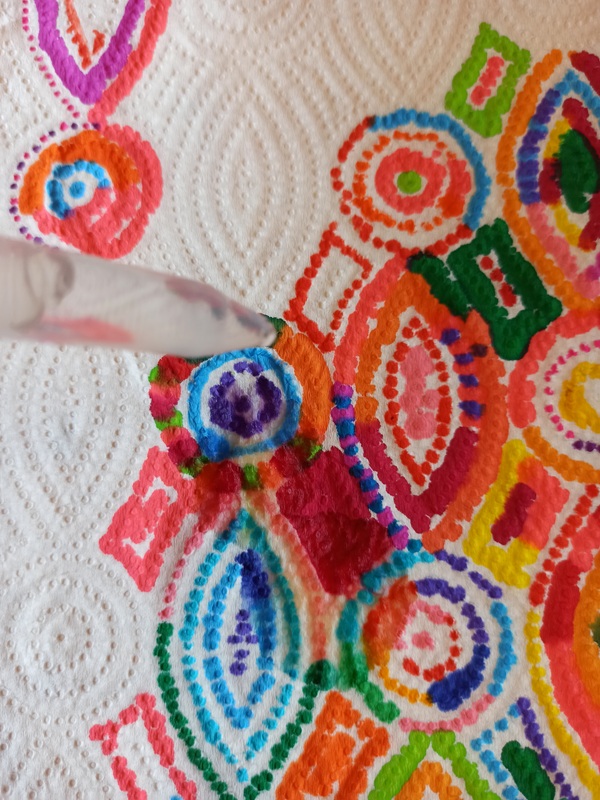
The water, in fact, by wetting the sheet, highlights the colors, transforms them and makes them faded, highlighting the principle of capillarity and making the passage interesting.
In addition, once finished pouring the drops with the dropper, I overlaid on the first, a second sheet of clean house paper and
I asked the children to play with their little fingers touching the paper, creating an effect of absorption and passing color from one sheet to another.
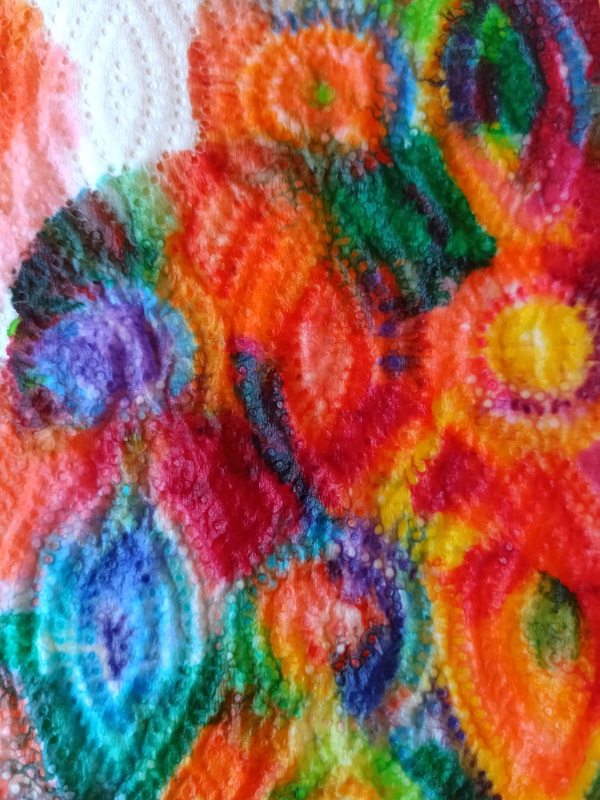
Carving and construction of a channel with plastic bottles.
Looking for a new material to propose to the children, I thought of building together with them a channel to fill the tank and with which we usually carry out Montessorian transfers
Using creatively recycled plastic bottles.
The material required is:
- one half-litre plastic bottle for each child
- scissors
- die cutting machine
- plastic tape
The first part of the work consisted in cutting the bottles, depriving them of the neck and bottom, then dividing them into two halves, lengthwise.
Children should be helped to work safely: the initial cut must be made by the adult, to allow them to continue then in the cutting, without risking to get hurt.
Cutting plastic is still an unusual activity, which for some is difficult, but proposing it helps to experience the difficulty and ability to overcome obstacles
and in the end to develop resilience: nothing makes children satisfied and happy as being able to do something that previously put them in difficulty.
Once all the bottle parts are ready, the work of drilling and connecting the various pieces begins through the use of the drilling machine and the tape.
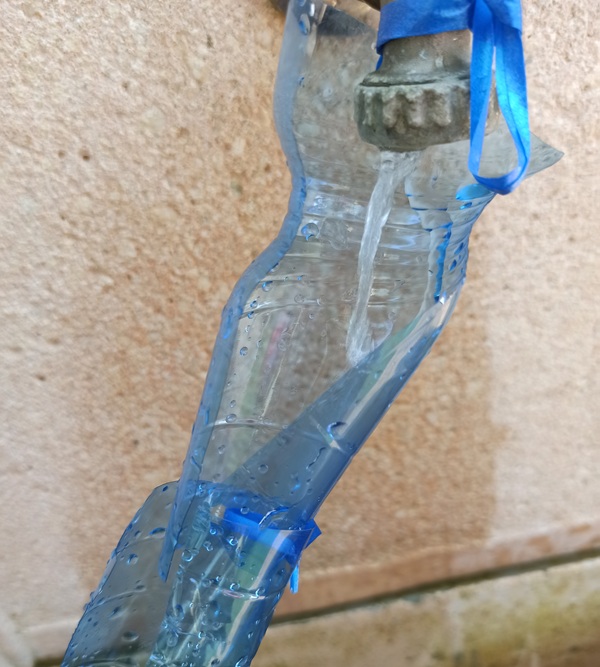
This activity takes time and patience, children want to test themselves in an attempt to help but fundamentally, this part of the work
requires the presence and intervention of the adult.
Once the whole thing is ready, assembled the channel, the activity can continue outside with the use of the channel to transport water from the tap to the tank or simply to play and transfer.
By testing our channel, we discovered all the flaws (very fun to play) and the different problems resulting from its somewhat rough structure.
But as it is in our style, the difficulty did not dissuade us but rather, convinced that we could have done better, so the activity of the following day was born.
Construction of a track/slide, to be used for playing with and without water.
As the previous day we used plastic bottles recovery, but this time larger, giving us the goal of building a channel that could be used for both Montessoriani transfers with water, is dry, as a track for cars and small games.
Materials required:
- 1.5 litre plastic bottles
- drilling/punching machine
- scissors
- plastic tape
The process this time saw us engaged in cutting the wider parts of the bottles, always with scissors and having the prudence
to start on the cuts previously set by the teacher.
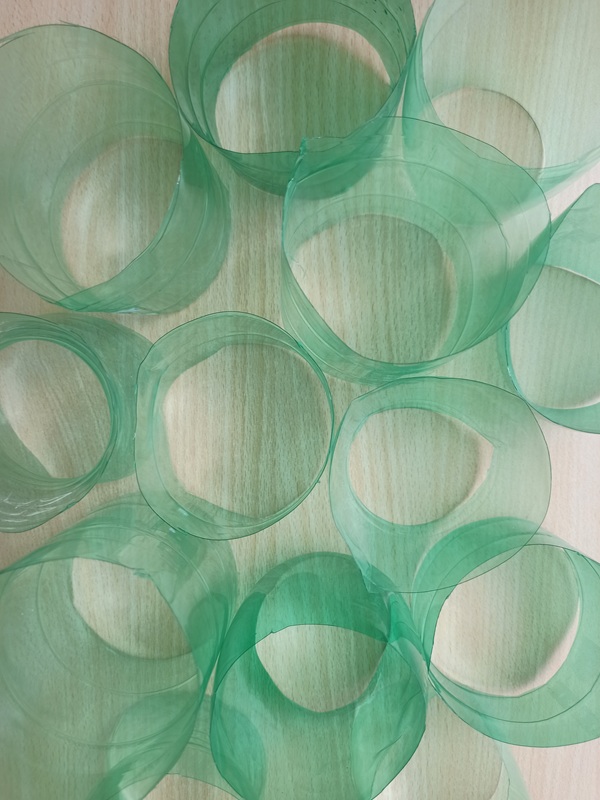
Once all the cut-out plastic cylinders were ready, we proceeded to their assembly: I let myself be helped by children who wanted to try to pierce or tie the tape, but even here a good deal of manual work was necessary, To pierce all the bottles and assemble them so that they go to compose a kind of mobile tube.
With a tape I tied it to a support and immediately the smallest children came to experience its use as a track for cars.
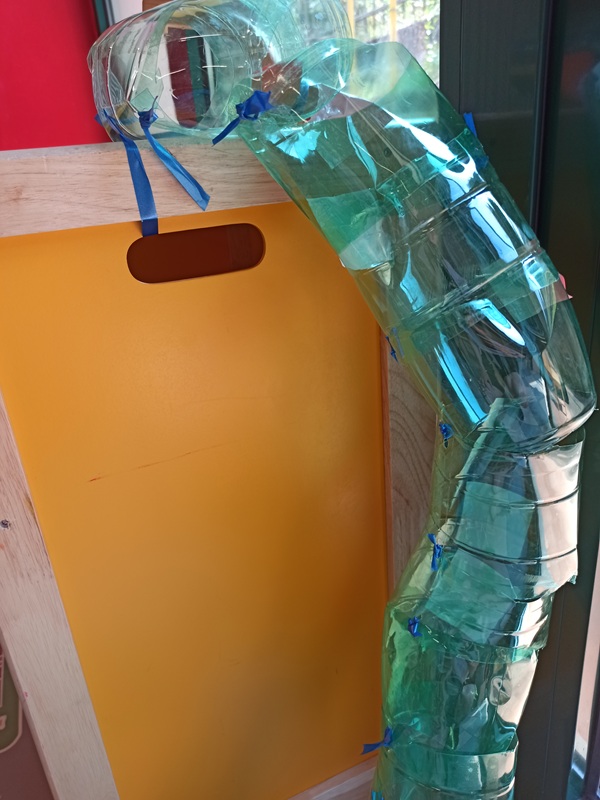
The tube thus assembled, in reality it is unstable and often breaks down, but also this is part of the game to make, try, correct, modify
Breaking down and recomposing, building and building itself.
For the moment we have not had time, but in the next few days, we promise to use it outdoors to play with the water and already we know that this game will be fun and refreshing.
If you liked this article you can share it and also read: Playing with water in five fun ways.
Designed by Freepik


